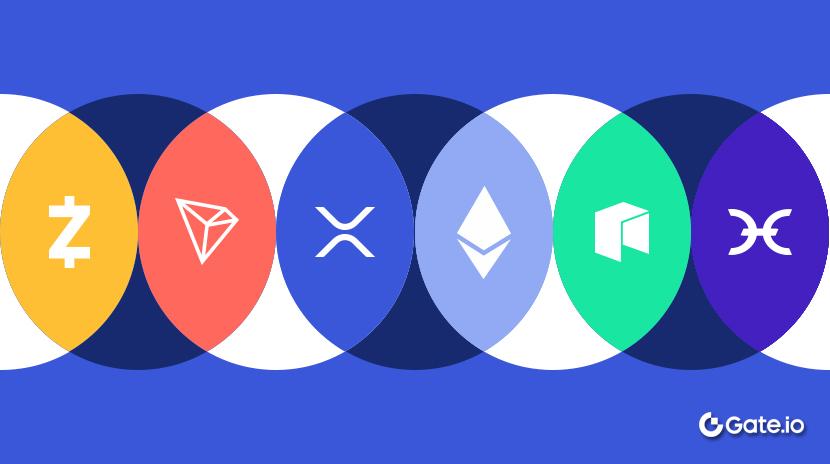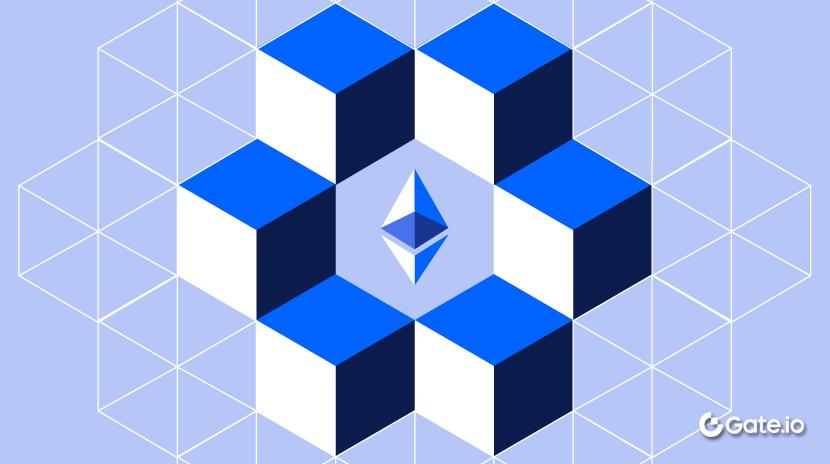Gate 研究院:Hyper Foundation 将赔偿用户损失,哈萨克斯坦拟设立国家加密银行
3 月 28 日,比特币价格下跌 0.77% 至 86,783 USDT,以太坊价格下跌 1.06%% 至 2,003 USDT。Hyperliquid 将下架 JELLY,用户损失由基金会承担。Sonic Labs 将推出 SonicCS 2.0,目标为共识速度翻倍、资源占用显著优化。哈萨克斯坦拟设立国家加密银行,推动加密交易全面纳入监管。Q1 黑客攻击致加密市场损失达 16.4 亿美元,创历史季度新高。比特币巨鲸本月增持逾 12.9 万枚,创下近 7 个月来最强吸筹潮。摘要
- 比特币价格下跌 0.77% 至 86,783 USDT,以太坊价格下跌 1.06%% 至 2,003 USDT。
- Hyperliquid 将下架 JELLY,用户损失由基金会承担。
- Sonic Labs 将推出 SonicCS 2.0,目标为共识速度翻倍、资源占用显著优化。
- 哈萨克斯坦拟设立国家加密银行,推动加密交易全面纳入监管。
- Q1 黑客攻击致加密市场损失达 16.4 亿美元,创历史季度新高。
- 比特币巨鲸本月增持逾 12.9 万枚,创下近 7 个月来最强吸筹潮。
行情点评
- BTC —— BTC 价格在过去 24 小时内下跌 0.77%,目前价格为 86,783 USDT,数据截至 3 月 28 日 12:00 PM (UTC+8)。BTC 价格近期整体处于区间震荡状态,阻力位位于 88,500 USDT 附近,支撑位位于 85,800 USDT 附近。价格多次触及上方阻力后受阻回落,同时在下方支撑区域获得买盘支撑,形成来回波动。短期均线多次交叉,表明市场并未形成明显趋势,投资者普遍处于观望状态。【1】

- ETH —— ETH 价格在过去 24 小时内下跌 1.06%,目前价格为 2,003 USDT,数据截至 3 月 28 日 12:00 PM (UTC+8)。ETH 近期整体处于区间震荡走势,价格在触及阻力位后多次回落,显示市场短期内缺乏方向性突破的动能,并在 1,980 USDT 附近形成支撑。成交量在价格触及关键位置时出现放量,表明支撑位置较为有效。MACD 指标在零轴附近徘徊,红绿柱状图交替出现,表明市场趋势不明朗。【2】

- ETF —— 据 SoSoValue 数据显示,3 月 27 日美国比特币现货 ETF 总净流入 8,906 万美元【3】,美国以太坊现货 ETF 总净流出 422 万美元。数据截至 3 月 28 日 12:00 PM(UTC+8)。【4】
- 山寨币 —— Storage、Mobile Mining、Proof of Stake 等板块分别上涨 13.2%、7.5%、4.9%。【5】
- 美股三⼤指数 —— 3 月 27 日标普 500 指数下跌 0.33%,道琼斯指数下跌 0.37%,纳斯达克指数下跌 0.53%。【6】
- 现货黄金 —— 现货黄金价格至 3,072 美元 / 盎司,日内涨幅 0.53%。数据截至 3 月 28 日 12:00 PM(UTC+8)。【7】
- 恐惧与贪婪指数 —— 恐惧与贪婪指数 44,市场处于恐慌状态。【8】
热门代币
根据 Gate.io 行情数据【9】,结合近 24 小时交易量和价格表现,热门山寨币如下:

KILO (KiloEX) —— 单日涨幅约 604.50%,流通市值为 2,197 万美元。
KiloEX 是一个去中心化永续合约交易平台,支持加密货币、外汇和股票等多资产交易,致力于提供高效率、低滑点的交易体验。平台采用稳定币中性 LP 机制进行自动对冲,降低做市风险,并提供跟单交易功能,方便用户复制策略,促进专业交易者与普通用户之间的良性互动。
KILO 为 KiloEX 平台的原生代币,单日涨幅超过 600%,市场反应热烈,显示出其机制设计与成长潜力受到广泛关注。值得注意的是,KILO 已于 3 月 27 日上线 Gate.io 交易所,进一步提升了其流动性与市场可见度,有助于推动 KiloEX 生态的持续扩张。
TUT (Tutorial) —— 单日涨幅约 142.70%,流通市值为 4,439 万美元。
Tutorial 是一个结合区块链教育与 Meme 元素的创新项目,旨在通过 AI 辅助教学,帮助用户更轻松地理解和使用区块链技术。其核心产品为 “Tutorial Agent” 智能辅导系统,能够将复杂的区块链知识拆解为简单易懂的互动式课程,降低用户的学习门槛。
TUT 代币于 3 月 28 日在某中心化交易所(CEX)上线,带来了更高的流动性与更广泛的用户覆盖,激发了市场的积极情绪,进一步推动了代币价格的上涨。
WAL (Walrus)—— 单日涨幅约 86.88%,流通市值为 6.08 亿美元。
Walrus 是一个去中心化数据存储网络,支持存储大型文本、视频、图像等富媒体内容。它将数据分片并分布在全球多个节点,区别于传统集中式云存储。即便部分节点离线,系统也能快速恢复完整数据,保障高可用性与抗故障能力。
Walrus 主网已于 3 月 27 日正式上线,增强了投资者对项目长期价值的信心,并激发了市场的购买需求。同时,WAL 代币已在包括 Gate.io 在内的多家中心化交易所(CEX)上线交易,显著提升了其流动性与可获取性,进一步吸引了更多投资者参与。
亮点数据
Q1 黑客攻击致加密市场损失达 16.4 亿美元,创历史季度新高
根据 Web3 漏洞赏金平台 Immunefi 数据,2025 年第一季度加密行业共发生 40 起黑客攻击事件,造成损失高达 16.4 亿美元,创下历史季度新高。尽管攻击次数较 2024 年同期下降 36%,但总损失金额却激增 4.7 倍,显示黑客攻击呈现出更高效率与更强针对性的特征。
本季度多数损失集中在少数大规模事件,其余攻击的平均损失金额则有所下降,反映出整体安全水平有所提升,资产规模较高的项目仍是黑客攻击的首要目标。攻击对象仍以跨链桥、DeFi 协议与交易平台为主,凸显 Web3 基础设施在安全防护上的结构性挑战。
从市场层面来看,安全事件虽然未对主流币种价格构成持续性冲击,但对投资者信心及资金流向影响显著。越来越多用户与机构偏好选择经过审计的协议或合规平台,安全性逐步成为 Web3 项目的核心竞争力之一。随着资本关注度上升,预计 Web3 安全赛道将在未来持续扩张与专业化。【10】
稳定币年转账量达 27.6 万亿美元,超越 Visa 与 Mastercard
Circle 于 3 月 27 日与纽约证券交易所母公司 ICE(洲际交易所)签署合作备忘录,计划将 USDC 与 USYC 纳入 ICE 的交易与清算系统。此举有望推动稳定币首次正式进入全球主要金融市场的清算流程,为其流动性和透明度再添保障。【11】
根据 CEX.IO 数据,2024 年稳定币链上转账总量已达 27.6 万亿美元,正式超越 Visa(15 万亿美元)与 Mastercard(9 万亿美元)的年度交易处理规模,凸显稳定币作为价值转移工具的高速增长趋势。这一数字不仅反映出稳定币在 DeFi、跨境支付等场景中的广泛应用,也显示其正快速逼近传统金融基础设施的核心地位。随着 USDC、USDT 等主流稳定币被越来越多机构采纳,其链上活跃度与实际支付能力已不容忽视。【12】
稳定币的爆发式增长正逐步改变传统金融的运行逻辑。若监管框架持续明确,其作为“数字现金”角色将进一步巩固,并有望成为下一代全球支付与清算网络的关键组成部分。
BTC 巨鲸本月增持逾 12.9 万枚,创下近 7 个月来最强吸筹潮
据 Glassnode 数据,自 2025 年 3 月 11 日以来,BTC 巨鲸地址(即持有大量 BTC 的机构或个人)累计增持超过 129,000 枚 BTC,为自 2024 年 8 月以来最强劲的单月吸筹行为。这一趋势释放出明显信号,头部资金正重新加码比特币市场,市场信心有望加速回暖。
巨鲸动向一向被视为市场风向标,大额增持通常发生在震荡或调整阶段,反映其对中长期行情持乐观态度。目前链上数据显示,主力资金正悄然布局。随着比特币减半临近,巨鲸持续加仓有望成为推动 BTC 中期行情的重要动能。【13】

热点点评
Sonic Labs 将推出 SonicCS 2.0,目标为共识速度翻倍、资源占用显著优化
Sonic Labs(Fantom 生态团队)于 3 月 28 日在 X 平台宣布将推出全新共识协议 SonicCS 2.0,共识速度提升 2 倍、内存使用减少约 68%,大幅优化性能与资源效率。联合创始人 Andre Cronje 表示,在正式发布前将持续优化,直至逼近物理极限,显示团队对高性能架构的坚定追求。
SonicCS 属于 Fantom 为下一阶段升级而打造的核心模块,其目标是在保持低延迟、高吞吐的基础上进一步降低资源开销,为 Layer1 区块链提供更强的可扩展性。SonicCS 2.0 的推出,或将为 Fantom 后续生态(如 DeFi、AI、游戏等)带来更流畅的链上体验。
从市场角度来看,性能提升类协议更新虽不直接反映在价格上,但对开发者友好度与用户体验影响深远。若 SonicCS 2.0 部署顺利,将强化 Fantom 的技术竞争力,并吸引更多构建者加入其生态体系。【14】
哈萨克斯坦拟设立国家加密银行,推动加密交易全面纳入监管
哈萨克斯坦正计划设立一所“国家加密银行”,以统一管理并监管全国范围内的加密货币交易。该机构将负责加密资产的清算、支付与审计等核心功能,意图将目前大量处于灰色地带的加密活动纳入合规体系。该国立法者指出,目前约 90% 的加密交易发生在法律监管之外,这一现象不仅影响税收与金融安全,也为洗钱与资本外逃留下隐患。因此,建立官方的监管架构已成为当局优先事项。
从市场角度来看,哈萨克斯坦此举代表着新兴市场国家正逐步摆脱过去“挖矿友好、监管松散”的角色,转向构建更可控、制度化的加密金融体系。若该国成功落地国家加密银行,或将为其他资源型国家提供参考样板,推动区域性监管趋同。
尽管短期内对全球市场影响有限,但这一趋势可能加速“监管合规化与国家介入并存”的新阶段,为中心化交易平台与链上透明金融系统带来结构性挑战与机会。【15】
Hyperliquid 将下架 JELLY,用户损失由基金会承担
据 Hyperliquid 官方公告,社区验证者已通过治理投票,决定将 JELLY 代币从平台下架。此次投票是在 JELLY 被曝存在项目操控行为及价格操纵质疑后发起的,社区成员普遍支持以去中心化方式处理风险资产。
Hyperliquid 官方表示,用户在本次事件中产生的损失将由 Hyper Foundation 基金会承担,并已启动相关补偿机制。这一做法旨在维护用户权益,同时重申平台对生态健康与市场透明度的重视。
此次事件也再次引发市场对早期项目上线审核机制的关注,Hyperliquid 表示将进一步完善治理流程与风险控制框架,防止类似问题再次发生。【16】
融资讯息
据 RootData 数据,过去 24 小时共有 6 个项目公开宣布获得融资,总融资金额超过 2,700 万美元,最高单笔融资额达 1,400 万美元,涉及基础设施、DeFi 等领域,以下是融资项目前三的具体情况:【17】
Abound —— Abound 完成 1,400 万美元融资,投资方包括 NEAR 基金会、Circle Ventures 等知名机构。此次融资资金将用于扩大其在美国市场的业务规模,并改善技术基础设施。Abound 聚焦于美印之间的资金流通,致力于通过数字化手段简化跨境汇款流程,提升到账速度与交易透明度。
本轮融资将进一步助力 Abound 在美印跨境支付赛道中确立竞争优势。随着技术基础设施的持续升级,平台有望提供更快的到账体验、更低的手续费以及更强的合规透明度,吸引更多用户从传统银行或高收费平台转向其服务体系。
Warlock —— Warlock 完成 800 万美元融资,由 Polychain、Greenfield Capital 等参投。资金将用于扩充核心开发团队、推进产品协议部署,以及加强与 DeFi 协议和 L2 网络的集成测试。Warlock 致力于构建 MEV 优化解决方案,让原本被套利者(如搜索者)捕获的 MEV 与清算收益,能部分回流给协议与用户,以降低整体使用成本。
随着 Warlock 融资到位、产品逐步落地,其机制若被主流协议采纳,有望推动“公平 MEV 分配”趋势,重塑用户与协议之间的价值关系。此举不仅有助于提升用户黏性,也可能引发 DeFi 协议间在收益结构上的新一轮竞争,推动生态朝更透明、高效、用户友好的方向发展。
De Charge —— De Charge 完成 250 万美元种子轮融资,由 Lemniscap、Daedalus 等参投。资金将用于推动硬件量产、充电节点网络部署、以及构建 De Charge 的 Web3 激励系统。DeCharge 致力于将电动车充电转变为社区共建共享的能源网络,其核心产品是一套模块化 7kW 充电系统,允许任何个人或机构拥有、部署并从中获取收益。
De Charge 的出现代表着 Web3 正从链上金融逐步走向现实基础设施的代币化应用。该项目将电动车充电与加密激励机制结合,不仅降低了部署门槛,还为用户提供了可持续的收益来源。其“边用电边赚钱”的模式,可能吸引大量用户参与基础设施建设,推动绿色能源与区块链应用融合。
空投机会
Silencio Network
Silencio Network 是一个去中心化的环境智能平台,旨在通过将智能手机转变为噪声测量工具,构建全球最全面的噪声数据资源库。用户通过手机测量并上传环境噪声数据,可获得应用内代币奖励,这些代币可兑换为原生加密货币 SLC。【18】【19】Silencio Network 空投活动参与者可通过下载 Silencio 应用程序,贡献噪声数据来赚取代币奖励。
参与方式:
- 访问 Silencio Network 官方网站。
- 扫描二维码并下载 Silencio iOS 或 Android 应用程序。
- 创建账户后贡献噪声数据以获得奖励。
- 邀请好友获得更多奖励。
提示:
空投计划和参与方式可能会随时更新,建议用户关注 Silencio Network 的官方渠道以获取最新信息。同时,用户应该谨慎参与,注意风险,并在参与前做好充分的研究。Gate.io 不保证后续后续空投奖励发放。
参考资料:
- Gate.io,https://www.gate.io/trade/BTC_USDT
- Gate.io,https://www.gate.io/trade/ETH_USDT
- SoSoValue,https://sosovalue.xyz/assets/etf/us-btc-spot
- SoSoValue,https://sosovalue.xyz/assets/etf/us-eth-spot
- CoinGecko,https://www.coingecko.com/en/categories
- Investing,https://investing.com/indices/usa-indices
- Investing,https://investing.com/currencies/xau-usd
- Gate.io,https://www.gate.io/bigdata
- Gate.io,https://www.gate.io/price
- Immunefi,https://downloads.ctfassets.net/t3wqy70tc3bv/kicQd50NcNkEQyA1QmpOB/b365451e130c1b1c0cbe55c191a22d41/Immunefi_Crypto_Losses_In_Q1_2025.pdf
- X,https://x.com/circle/status/1905237115199422660
- CEX.IO,https://blog.cex.io/ecosystem/stablecoin-landscape-34864
- X,https://x.com/Cointelegraph/status/1905398272132288863
- X,https://x.com/SonicLabs/status/1905291005605372328
- X,https://x.com/Cointelegraph/status/1905375540078395768
- X,https://x.com/HyperliquidX/status/1904923137684496784
- Rootdate,https://www.rootdata.com/Fundraising
- Silencio Network,https://www.silencio.network/
- Gate.io,https://www.gate.io/learn/articles/what-is-silencio-network-slc/7313?utm_source=chatgpt.com
Gate 研究院
Gate 研究院是一个全面的区块链和加密货币研究平台,为读者提供深度内容,包括技术分析、热点洞察、市场回顾、行业研究、趋势预测和宏观经济政策分析。
点击链接立即前往
免责声明
加密货币市场投资涉及高风险,建议用户在做出任何投资决定之前进行独立研究并充分了解所购买资产和产品的性质。 Gate.io 不对此类投资决策造成的任何损失或损害承担责任。
相关文章





什么是山寨币
